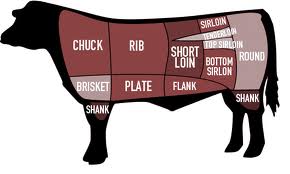One of the biggest mistakes that people make when traveling is that rather than trying to acclimate to locals favorites they automatically try to find a replacement for their favorite *fill in the blank* while they’re away. Come on people! Where’s your sense of adventure? Live like the locals do; guaranteed they know better than you do what is delicious and worth ordering.
Time and time again I’ve seen the same thing happen here in Argentina. Visitors flock to this beef capital of the world in search of succulent cuts of mouth-watering steak BUT rather than research the premium cuts served here in Buenos Aires they immediately revert to their go to from back home. In the States filet mignon is considered a premium cut. Here in Argentina it is known as bife de lomo and while it isn’t a bad cut (no beef here is bad) it’s rarely consumed by the Argentine population looking for something delicious to have at their favorite parrilla or at an asado. Here, the primo premium steak cut is bife de chorizo.
If I were to literally translate this it would be called the ‘sausage steak’ but I’m here to tell you it has NOTHING to do with the delicious Argentinian sausage that everyone should try at some point. It’s cut from the short loin and in the United States it’s known as a strip steak or a New York strip. The steaks are typically cut about 5 centimeters thick and they’re longer than they are wide which one might say vaguely resembles a sausage and therefore explains the name ‘bife de chorizo’ (not the best reasoning I’ve ever heard but hey, it works). This cut is generally not marbled but it does have a large strip of fat along one side of the steak. This thick layer of fat when grilled properly cooks into the meat giving it extra flavor and making it extremely juicy. While it can be slightly less tender than the bife de lomo because the muscle it is cut from is worked much more, it also has a much more intense flavor. If you’re looking for pure beef flavor this is the cut for you.
As far as cooking points are concerned medium-rare is really the way to go with bife de chorizo. This allows at fat along the side of the steak to melt nicely while still maintaining a tender inside. If you cook it further than medium you’re risking a very chewy steak that will not only give your jaw a work out but can also be quite a let down if you’re looking for that cuts like butter type steak. This is also one of those cuts of meat that is better cooked in steaks as opposed to in a large block of meat. While it can be done it’s much harder to get everything cooked evenly. It would require a considerable amount of time, patience and fretting over whether or not the heat was right.
When in Argentina if trying to solve that delicious beefy craving the way to go is bife de chorizo. Trust me, no…trust the Argentines. Like I said, the locals know what’s best.














